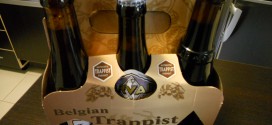Bă, eu când vă spun că-i o treabă cu berea şi femeile… Voi nimic! ‘Radler! – Radler!’ şi râdeţi de mine.
Luaţi aminte la ce vă spun! Citesc cum că, undeva în Marea Britanie, s-au afundat unii în istoria berii (da, aşa cum v-afundaţi în bere-n uichenduri) şi au constatat că, deşi stimabilii au fost personajele dominante, doamnele au avut şi ele rolul lor, rol pe care l-au jucat corespunzător, aş spune.

Articolul de care vă pomenesc (nu vă mai foiţi atâta-n scaun, că vi-l arăt imediat) încearcă să aducă puţin femeile în lumina reflectoarelor, că de, aşa ne stă nouă bine. În mod evident, vorbim despre cele care au contribuit la cultura berii (vorbim dspre Marea Britanie, da?), cea pe care o ştim cu toţii (mă rog, unii) astăzi. Distinsele doamne şi-au câştigat dreptul de a fi menţionate pentru că au reuşit să facă bere bună (Monica Mândruţiu vă spune ceva?) şi s-o ‘scoată în lume’. V-am mai spus şi vă repet: femeile ar fi mult mai pricepute la capitolul degustări, sunt mai sensibile la nuanțele de aromă, se concentrează mai bine.
Cum am promis, vă las cu articolul, da’ îmi promiteţi că nu faceţi d’astea: ‘Award for most patronising customer this week goes to the man who said ‘Obviously you don’t drink real ale but what do you recommend?’’
‘Part 1. Equally revolting
Women weren’t made to feel all that welcome in the early days of the struggle against the Big Six brewers.
The essentially backward-looking and conservative Society for the Preservation of Beers from the Wood (SPBW) founded in 1963 received its first application for membership from a woman in 1965 — an eventuality which had not been taken into account when the constitution was drawn up. After much debate, founder member John Gore proposed a compromise: that women be permitted to join as associate members.
When the Campaign for Real Ale came along in 1971, it borrowed some of its style and rhetoric from socially liberal protest groups, and its senior ranks were filled with young, open-minded people who had grown up during the sexual revolution of the nineteen-sixties. Though a streak of ‘robust’ (sexist) humour was, according to Roger Protz, a core part of CAMRA’s identity in those early days, the Campaign not only allowed but positivelyencouraged women to join.
In April 1973, Valerie Mason was elected to its ten-strong National Executive… as secretary, of course. Margaret Clarks-Monks joined the NE in 1977 and served for seven years, though Chairman Tony Millns’ comment when she stood down is telling: ‘She was much more than the statutory woman…’
Continuarea o găsiţi aici.
 Blog de Bere
Blog de Bere




